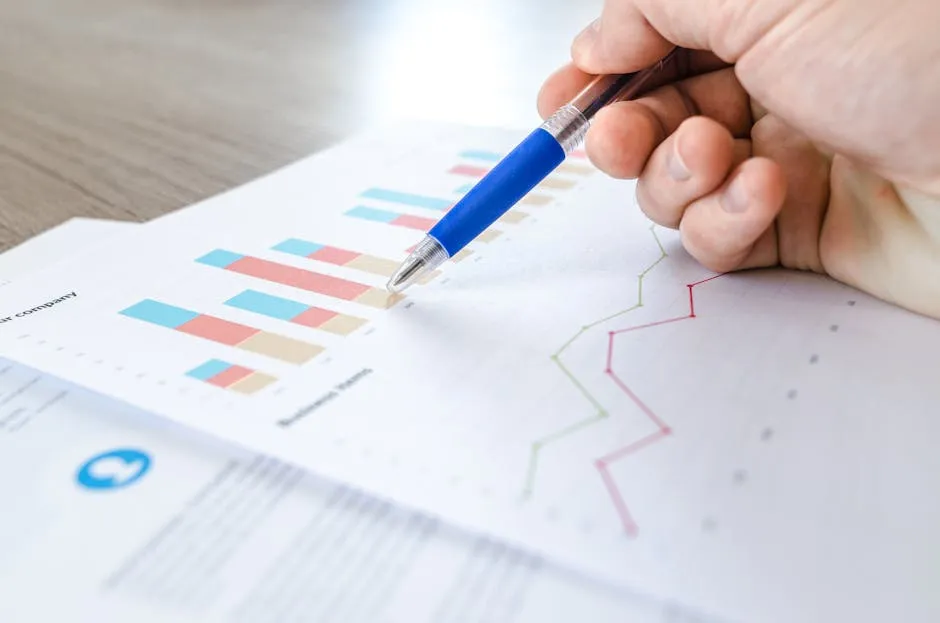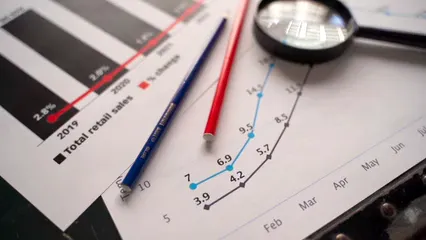Introduction
Statistics is the silent hero of the modern world. It’s a powerful ally in sectors like healthcare, business, social sciences, and even sports. In a universe overflowing with data, statistics helps us sift through the noise and find meaning. From understanding patient outcomes in medicine to analyzing consumer behavior in marketing, statistics is everywhere!
At its core, statistics is the science of data. It involves collecting, analyzing, interpreting, presenting, and organizing data. Simply put, it’s the toolkit we use to decode the vast amounts of information that bombard us daily. Statistics equips us to make informed decisions based on evidence rather than hunches. Imagine choosing a restaurant based solely on your gut feeling versus reading customer reviews and ratings. Which would you trust more? Exactly!
Let’s take a moment to shine a spotlight on the brains behind “Introduction to the Practice of Statistics”. The book is authored by David S. Moore, George P. McCabe, and Bruce A. Craig, all esteemed figures in the field of statistics. Moore, a former president of the American Statistical Association, is an emeritus professor at Purdue University. McCabe serves as the associate dean for academic affairs at Purdue, while Craig directs the Statistical Consulting Service. With their collective expertise, they have crafted a resource that is both approachable and insightful.
The purpose of this blog post is to lay a solid foundation for anyone new to statistics. By breaking down complex concepts into digestible bites, we aim to demystify statistics. Whether you’re a student, professional, or simply curious, this guide will help you navigate the essential aspects of statistics, making it accessible and enjoyable. So, buckle up as we embark on this exciting statistical adventure!

Key Concepts in Statistics
Understanding statistics starts with a few foundational concepts. Let’s break them down into bite-sized pieces!
Population vs. Sample: Imagine you’re at a pizza party. The entire guest list represents the population. But let’s say you only ask a few friends what toppings they prefer. That smaller group is your sample. Why does this matter? Well, knowing the difference helps in making accurate conclusions. A sample can give insights into the larger group, but if it’s not chosen carefully, you might end up with a bunch of pineapple lovers skewing the results!
Data Types: Data comes in two main flavors: qualitative and quantitative. Qualitative data is like the toppings on your pizza—descriptive and categorical. Think colors, names, or opinions. On the other hand, quantitative data is like the number of pizzas ordered—numerical and measurable. It tells you how much or how many. Knowing these types helps in choosing the correct statistical methods for analysis.
Variable Types: Variables can be classified as continuous or discrete. Continuous variables are like pizza slices; they can take any value within a range. For example, the amount of cheese on a pizza can vary infinitely. Discrete variables, however, are more like the number of pizzas you have—whole numbers only. Understanding these types helps in selecting the right statistical tools for analysis.

The Statistical Process
Steps in the Statistical Process
Statistics isn’t just about crunching numbers; it’s a meticulous process. Here’s how it typically unfolds.
Step 1: Data Collection
Data collection is the first step and sets the stage for everything that follows. You can gather data through various methods: surveys, experiments, or observational studies. Surveys are like sending out pizza questionnaires to gather opinions. Experiments involve testing hypotheses—like comparing two pizza recipes. Observational studies are akin to watching how people choose their toppings without interference. Each method has its strengths, but sampling methods are crucial. Random sampling ensures everyone has a chance to participate, while stratified sampling focuses on specific subgroups. Cluster sampling is like dividing the party into groups and only asking one from each. Choosing the right method can make or break your results!
Step 2: Data Organization
Once you have your data, it’s time to organize it. This step is vital for making sense of the information. You can use tables to display the data clearly or graphs for a visual representation. Think of a bar chart showing the favorite pizza toppings among your friends. Tools for data visualization, like histograms or pie charts, can help illustrate trends and patterns. A well-organized dataset can transform chaos into clarity, making it easier to draw conclusions.

As we navigate through the statistical process, remember that each step flows into the next, building a coherent picture of the data at hand. Embrace these concepts and processes, and you’ll be well on your way to mastering the art of statistics!
Step 3: Data Analysis
Welcome to the thrilling world of data analysis! It’s where numbers transform into stories. But how do we make sense of all this data? Enter statistical software and tools, our trusty sidekicks in this adventure. Let’s take a closer look!
Introduction to Statistical Software and Tools
Statistical software is like a Swiss Army knife for data analysts. It simplifies complex calculations and helps visualize data trends. Two popular tools you might encounter are R and SPSS.
R is an open-source programming language. It’s powerful, flexible, and favored by statisticians worldwide. With R, you can perform intricate analyses and create stunning graphics. The best part? It’s free! So, if you’re looking to unleash your inner data scientist without breaking the bank, R is your friend. For a comprehensive guide, check out “R Programming for Data Science” by Hadley Wickham.
SPSS, on the other hand, is a user-friendly software designed for statistical analysis. It’s particularly popular in social sciences. SPSS offers a straightforward interface, making it accessible for beginners. You can run various analyses with just a few clicks. Whether you’re crunching numbers for a thesis or analyzing survey data, SPSS has got your back. If you’re facing issues with SPSS, you might find this “SPSS Statistics for Dummies” helpful.
These tools are essential for anyone diving into data analysis. They help you work smarter, not harder!

Basic Statistical Analysis Techniques
Now that we’ve got our tools, let’s discuss some fundamental statistical analysis techniques. These are the bread and butter of data analysis.
- Mean: Often referred to as the average, the mean is calculated by summing all values and dividing by the number of observations. If you have exam scores of 70, 80, and 90, the mean is (70 + 80 + 90) / 3 = 80. Easy, right? To understand more about what does mean identically distributed in statistics, visit this article.
- Median: The median is the middle value in a dataset when arranged in ascending order. If we take the same scores (70, 80, 90), the median is 80. If we had an additional score of 100, it would be (80 + 90) / 2 = 85. Medians are particularly useful when your data has outliers. They give a better sense of the central tendency. For insights on median salary trends in Poland for 2024, check out this resource.
- Mode: The mode is the value that appears most frequently in your dataset. If your exam scores were 70, 80, 80, and 90, the mode would be 80. It’s like the popular kid in school—everyone seems to gravitate toward it! For a deeper dive into statsmodels and residuals statistics, visit this guide.
- Standard Deviation: This measure shows how much variation exists from the mean. A low standard deviation means the data points are close to the mean, while a high standard deviation indicates a wide spread. Think of it as a measure of consistency. If your scores are 70, 80, and 90, the standard deviation will be lower compared to a set of scores like 60, 70, 80, 90, and 100, where the scores are more spread out.

These basic techniques provide a solid foundation for any data analysis. They help you summarize and interpret data effectively. For a deeper understanding of statistical concepts, you might want to check out “The Art of Statistics: Learning from Data” by David Spiegelhalter.

Importance of Data Interpretation
Understanding results is key in statistics. It’s not just about crunching numbers; it’s about making sense of them. Data interpretation is where you find the gold nuggets hidden in the data.
First, grasping the significance of results is crucial. Are the findings statistically significant? Do they matter in the real world? This is where you need to channel your inner detective. Look for trends, correlations, and insights that can guide decisions.
However, be wary of common pitfalls! Bias can sneak into your analysis without warning. For instance, if you only survey friends who love pineapple on pizza, your results will likely skew heavily in favor of that topping. Overgeneralization is another trap. Just because your data suggests a trend doesn’t mean it applies to everyone. Always question your findings and consider the broader context.

In summary, data analysis is a powerful tool in statistics. With the right software and techniques, you can extract meaningful insights from data. Just remember to interpret your findings wisely to avoid falling into the traps of bias and overgeneralization. Let’s keep the curiosity alive as we continue our statistical journey!
Exploring Descriptive Statistics
Measures of Dispersion
When we talk about statistics, it’s essential to grasp how data varies. This variability is captured through measures of dispersion. These measures help us understand the spread of data points and their relationship to the average.
Range is the simplest measure of dispersion. It’s calculated by subtracting the smallest value from the largest value in a dataset. For example, if your test scores range from 60 to 90, your range is 30. It gives a quick snapshot of how diverse your data is, but it doesn’t tell the whole story.
Then we have variance. This measure takes into account how far each number in a dataset is from the mean and squares that distance. Think of it as a more detailed version of the range. If scores are clustered closely around the mean, variance will be low. If they’re scattered widely, variance will be high. It’s a bit like figuring out how many friends you have who are outgoing versus those who prefer a quiet evening at home—variance helps us see the bigger picture!

Lastly, there’s standard deviation. This is simply the square root of the variance. It provides a measure of average distance from the mean. If the standard deviation is low, your data points are close to the mean. If it’s high, they’re spread out. It’s like comparing a group of friends who all enjoy the same hobby versus a mixed crowd with wildly different interests. Understanding these measures is vital. It helps us interpret the reliability of our data and make informed decisions.
Visualizing Descriptive Statistics
Once we have our measures of dispersion, how do we visualize them? Graphical representations are crucial. They transform numbers into visuals, making data easier to digest.
Box plots are fantastic for showcasing the range, median, and quartiles of a dataset. They provide a clear view of the data distribution. Imagine a box and whiskers; the box represents the middle half of your data, while the whiskers show the variability outside the upper and lower quartiles. This way, you can quickly spot outliers and see how scores compare.
Scatter plots are another invaluable tool. They display values for two different variables, showing how they relate to each other. For instance, plotting study hours against test scores can reveal patterns—like whether more study time correlates with higher scores. It’s a visual way to identify trends or clusters in your data.

When creating visualizations, keep some best practices in mind. Always label axes clearly and provide a legend if necessary. Use appropriate scales to avoid misleading interpretations. And remember, simplicity is key! The goal is to make your data accessible, not to confuse your audience with overly complicated graphics.
In summary, mastering measures of dispersion and effective visualization techniques is foundational in statistics. They provide essential insights into data variability and help communicate complex information in an understandable way. By embracing these concepts, you can enhance your statistical literacy and make data-driven decisions with confidence.

Hypothesis Testing
In statistics, hypothesis testing serves as a fundamental method for making decisions based on data. It starts with two competing hypotheses: the null hypothesis (H0) and the alternative hypothesis (H1). The null hypothesis typically states that there is no effect or no difference in the population, while the alternative hypothesis suggests that there is an effect or a difference.
Imagine you’re a scientist testing a new fertilizer. Your null hypothesis might be that this fertilizer has no effect on plant growth. The alternative hypothesis would suggest that the fertilizer does improve growth. You collect data from your experiment and perform statistical tests to determine which hypothesis is more likely true based on the evidence. For a practical guide on hypothesis testing, consider “Statistics Done Wrong: The Woefully Complete Guide” by Alex Reinhart.

However, the world of hypothesis testing isn’t without its pitfalls. Two types of errors can occur: Type I and Type II errors. A Type I error happens when you reject a true null hypothesis, essentially claiming the fertilizer works when it doesn’t. On the flip side, a Type II error occurs when you fail to reject a false null hypothesis, suggesting the fertilizer has no effect when it actually does. Balancing these errors is crucial in research, as it affects the validity of your conclusions. For a comprehensive guide on hypothesis testing, refer to this cheat sheet.
Confidence Intervals
Confidence intervals provide a range of values that likely contain the population parameter. They offer a snapshot of uncertainty around a sample estimate. For instance, if you calculate a confidence interval for the average height of sunflowers, it might be between 5 to 7 feet with 95% confidence. This means you can be 95% certain that the true average height lies within this range.
Calculating a confidence interval typically involves the sample mean, the standard deviation, and the sample size. The formula looks like this:
Confidence Interval = Sample Mean ± (Critical Value × Standard Error)

The critical value is based on the desired confidence level (e.g., 1.96 for a 95% confidence level). The standard error is the standard deviation divided by the square root of the sample size. Interpreting these intervals is key; they help gauge the precision of your estimate. A narrower interval suggests greater certainty, while a wider one indicates more variability in your data.
Applications of Statistics
Statistics in Various Fields
Statistics is a versatile tool, playing a pivotal role across multiple domains. For insights on applied statistics in business and economics, you can download the 7th edition PDF.
- Business and Economics: Companies harness statistics for market research, helping them understand consumer preferences. Quality control processes also rely on statistical methods to ensure products meet standards. Think of a car manufacturer using stats to minimize defects in production.
- Health and Medicine: In healthcare, statistics are crucial for clinical trials, determining the effectiveness of new treatments. Epidemiology relies on statistical models to track disease outbreaks. For instance, analyzing data from COVID-19 cases helps public health officials make informed decisions.
- Social Sciences: Survey research often utilizes statistics to analyze public opinions and behaviors. Behavioral studies employ statistical analysis to understand human actions better. Imagine a psychologist using stats to assess the impact of therapy on patient outcomes.

Real-World Examples
Statistics shine in real-world applications. Consider the case of a pharmaceutical company conducting a clinical trial for a new medication. By using hypothesis testing, they can determine if the drug significantly improves patient health compared to a placebo. For more on the methodologies behind these trials, check out “The Data Warehouse Toolkit: The Definitive Guide to Dimensional Modeling” by Ralph Kimball.
Another example is the use of statistics in sports analytics. Teams analyze players’ performances through statistical models to make strategic decisions. A basketball team might use shooting percentages to identify which players should take critical shots during games.

In education, statistics help evaluate teaching methods’ effectiveness. Schools analyze test scores to assess whether new curriculums improve student performance.
Overall, statistics are integral in various fields, helping professionals make data-driven decisions that impact society positively.
Conclusion
In this blog post, we’ve embarked on a journey through the fundamentals of statistics. We explored key concepts such as hypothesis testing and confidence intervals, revealing how they play vital roles in data analysis. Additionally, we highlighted the vast applications of statistics across business, health, and social sciences, showcasing its significance in real-world scenarios.
Understanding statistics is essential in today’s data-driven world. It empowers individuals to make informed decisions in both personal and professional contexts. Whether you’re a student, a business professional, or simply someone keen to understand the world better, a solid grasp of statistics is invaluable.
We encourage you to continue your exploration of statistics. Dive into textbooks, online courses, or even local workshops. The more you learn, the more you can appreciate the power of statistics in shaping our understanding of the universe. After all, in a world brimming with data, being statistically savvy is a superpower worth having! If you want a great resource to get started, consider “The Big Book of Data Science: A Practical Guide for Beginners” by Ben Hwang.
Please let us know what you think about our content by leaving a comment down below!
Thank you for reading till here 🙂
All images from Pexels




